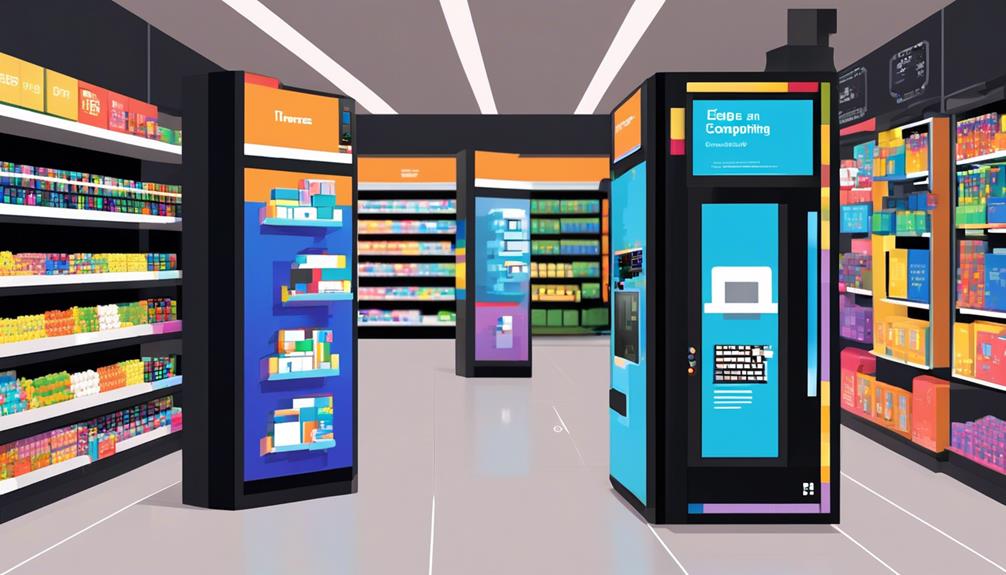In the ever-evolving landscape of retail, staying ahead of the competition requires the adoption of cutting-edge technologies. One such technology that has gained significant attention is edge computing hardware.
With its ability to process and analyze data in real-time, edge computing is proving to be a game-changer for the retail industry. From enhancing customer experiences to optimizing inventory management and supply chain operations, the possibilities seem endless.
But what exactly is edge computing hardware, and how can it revolutionize the retail sector? In this discussion, we will explore the various applications of edge computing in retail, its benefits, and its potential to shape the future of the industry.
So, fasten your seatbelts and get ready to embark on a journey into the world of edge computing hardware for retail.
Key Takeaways
- Edge computing enhances customer experiences by enabling personalized and seamless interactions across multiple platforms.
- It offers a secure solution for protecting confidential customer information by utilizing edge devices and decentralized architecture.
- Point of sale solutions benefit from edge computing by providing speed, efficiency, and enhanced data security.
- Edge computing revolutionizes point of sale operations, offering quick and efficient checkout experiences, streamlined inventory management, and reliable operations in remote or low-connectivity areas.
Enhancing Customer Experiences
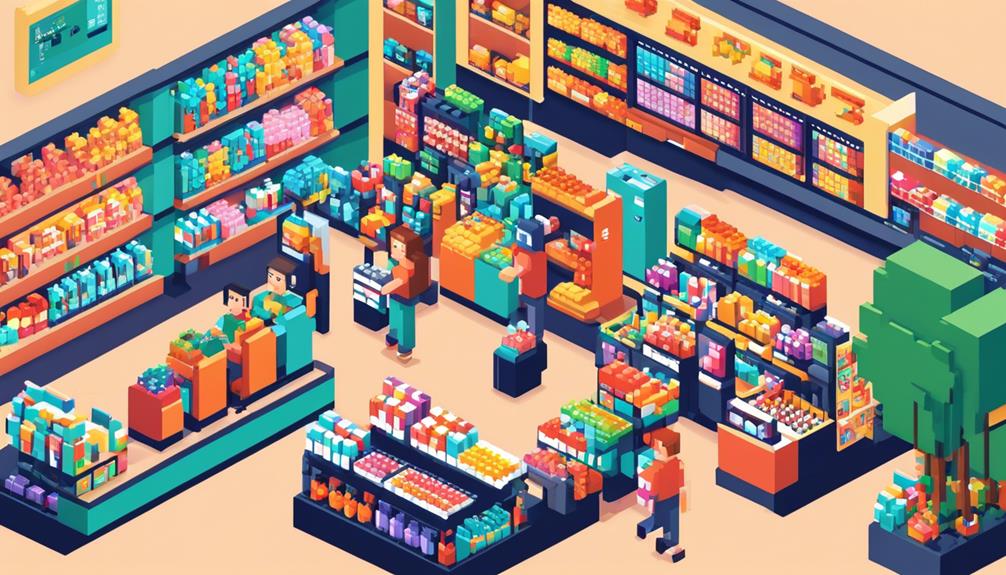
Enhancing customer experiences through edge computing technology enables retailers to provide personalized and seamless interactions across multiple platforms. By leveraging edge computing solutions, retailers can offer customers instant discount offers, personalized recommendations, and synchronized interactions across in-person, online, and mobile channels. This level of personalization not only enhances customer satisfaction but also fosters customer loyalty.
One way edge computing technology enhances customer experiences is through the use of interactive screens. These screens can be strategically placed throughout a retail environment, allowing customers to easily access product information, reviews, and recommendations. With edge computing, these screens can deliver real-time personalized content based on customer preferences and behaviors, creating a more engaging and tailored shopping experience.
Furthermore, edge computing enables retailers to seamlessly synchronize customer interactions across multiple platforms. For example, a customer could start browsing products on a retailer's website and then continue their shopping journey in-store, with their preferences and shopping cart seamlessly transferred between the two channels. This level of integration and continuity creates a frictionless experience for customers, increasing their satisfaction and likelihood of making a purchase.
In addition to personalized interactions, edge computing technology also enables retailers to improve inventory management and visibility. Real-time insight into inventory levels, coupled with RFID sensors, allows retailers to minimize stockouts and make informed purchasing decisions. By ensuring that products are always available, retailers can enhance the customer experience by reducing wait times and ensuring that customers can find what they need when they need it.
Confidential Customer Information Protection
With the increasing importance of protecting confidential customer information, edge computing technology offers a secure solution for retailers in enhancing security and compliance. Retailers handle vast amounts of customer data, including personal and financial information, making it crucial to safeguard this sensitive data from unauthorized access or breaches. Edge computing, with its decentralized architecture, addresses these concerns by processing and storing data locally on edge devices, reducing the risk of exposing customer information.
One example of edge computing technology that aids in protecting customer data is ObjectBox Sync. This solution filters and synchronizes only the necessary data on the device, ensuring that sensitive information is not unnecessarily transmitted or stored on the cloud. By controlling the synchronization of information into the cloud, retailers can secure sensitive customer data and maintain compliance with data protection regulations.
Furthermore, the data transfer between edge devices and the cloud is secure, utilizing encryption and authentication mechanisms. This ensures that confidential customer information remains protected during transit. Edge computing provides a secure environment for handling and protecting customer data in retail environments, mitigating the risks associated with centralized storage and processing.
Point of Sale Solutions
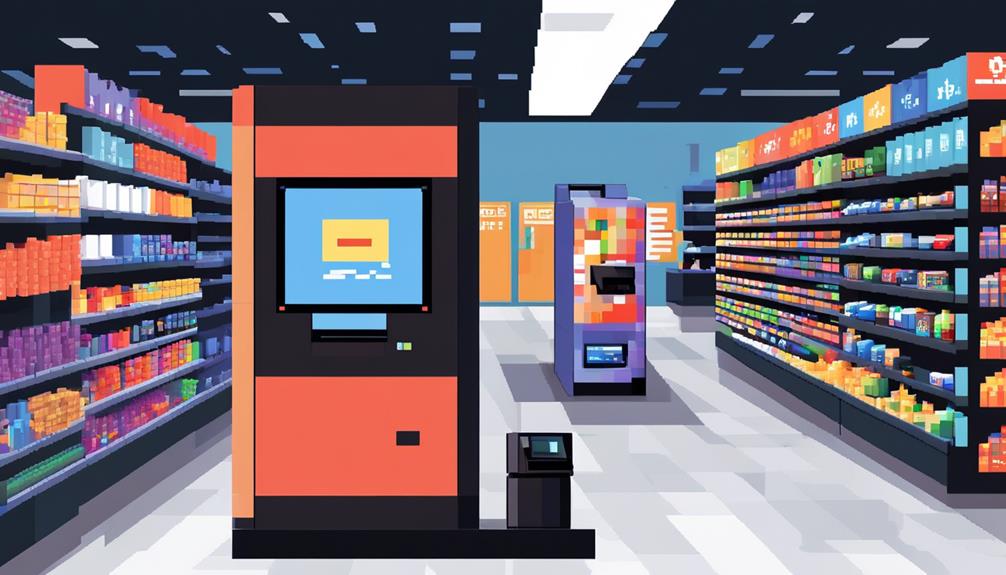
Point of sale solutions play a critical role in the retail industry, providing speed and efficiency in processing transactions. These systems enable seamless payment processing, inventory management, and sales tracking, enhancing the overall customer experience.
Alongside speed and efficiency, data security is of utmost importance in point of sale solutions, ensuring that customer payment information is protected from unauthorized access or breaches.
Speed and Efficiency
Edge computing revolutionizes point of sale (PoS) solutions, delivering unparalleled speed and efficiency in retail environments.
With edge computing, retailers can leverage real-time interactions to streamline inventory management systems and transaction processing. This enables quick and efficient checkout experiences, improving transaction speed and overall customer satisfaction.
By enabling offline payment processing and data synchronization, edge computing ensures reliable and efficient PoS operations, even in remote or low-connectivity areas.
The ability to process data quickly and securely enhances the speed and efficiency of point of sale solutions in retail environments. Retailers can rely on edge computing to provide seamless and efficient PoS experiences, reducing processing times and enhancing customer experiences.
Data Security
The implementation of edge computing in retail environments not only revolutionizes speed and efficiency but also addresses crucial concerns surrounding data security in point of sale solutions. With edge computing, retailers can capture and process payment data offline, ensuring that sensitive customer information is protected.
By enabling local analysis and computing, edge devices reduce the risk of data breaches, enhancing data security for retailers. Additionally, ObjectBox Sync provides a solution that filters and synchronizes only necessary data, improving security and compliance risks for retailers. This enables secure data transfer between the cloud and edge devices, further safeguarding sensitive information.
In-Store Experience Optimization
Utilizing smart devices and real-time customer data, in-store experience optimization enhances customer engagement and interaction while seamlessly integrating in-store, online, and mobile shopping experiences. Edge computing plays a crucial role in enabling this optimization by providing the necessary infrastructure and computing power to process and analyze data in real time.
Here are three key ways in which edge computing enhances in-store experiences:
- Interactive Screens: Edge computing enables the deployment of interactive screens throughout the store, allowing customers to access product information, reviews, and personalized recommendations instantly. These screens can also facilitate self-checkout and provide real-time inventory updates, improving the overall shopping experience.
- Personalized Purchase Suggestions: By leveraging real-time customer data, edge computing enables retailers to provide personalized purchase suggestions based on individual preferences, browsing history, and purchase patterns. This level of personalization enhances customer satisfaction and encourages repeat purchases.
- Proximity Marketing: Edge computing enables retailers to implement proximity marketing strategies by leveraging customer location data in real time. This allows them to send personalized offers and promotions directly to customers' mobile devices while they are in the store, increasing the likelihood of a purchase.
Proximity Marketing Strategies
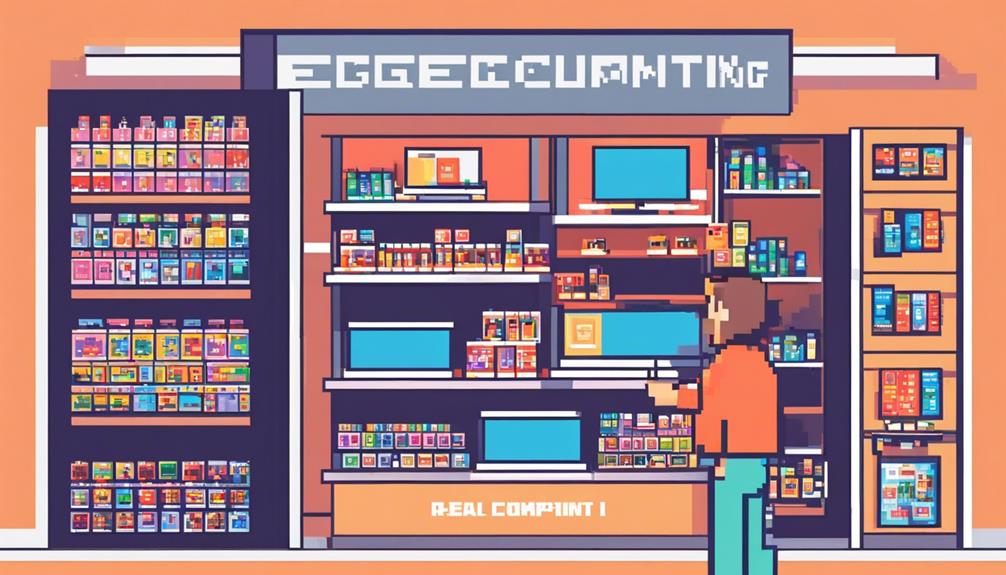
In the realm of enhancing the in-store experience, one area that holds immense potential is the implementation of proximity marketing strategies. These strategies leverage smart devices to provide real-time feedback and personalized purchase suggestions to customers based on their past behavior. By utilizing customer data, retailers can offer customized recommendations and promotions to shoppers based on their location within the store.
To effectively execute proximity marketing strategies, edge computing plays a crucial role. Edge computing enables the synchronization of in-store, online, and mobile shopping experiences, creating a seamless and integrated customer journey. By processing data closer to the source, edge computing allows for faster response times and reduced latency, ensuring a smooth and real-time interaction between the customer and the retailer's marketing efforts.
One of the key components of proximity marketing is the use of interactive screens or smart devices. These devices facilitate immersive and interactive shopping experiences, such as augmented reality (AR) virtual try-ons, which engage customers and drive sales. With the help of edge computing, these devices can provide instant discount offers and tailored digital signage based on customer behavior and purchase history, further enhancing the overall retail experience.
Automated Inventory Management
Automated inventory management revolutionizes the tracking and optimization of inventory through the implementation of IoT-driven technologies and smart shelving systems. By leveraging edge computing, retail businesses can enhance their inventory management practices and improve overall efficiency.
Here are three key ways in which automated inventory management, powered by edge computing, benefits the retail industry:
- Real-time tracking and replenishment: Edge computing enables local analysis and computing, allowing inventory management systems to monitor stock levels in real-time. As soon as an item's supply reaches a predetermined threshold, the system can automatically trigger a reordering process, ensuring sufficient stock availability. This real-time tracking and automated replenishment help minimize stockouts and reduce manual errors in inventory management.
- Enhanced inventory visibility: Edge technology provides retailers with immediate insight into inventory levels across multiple locations. This visibility allows them to make informed purchasing decisions, ensuring they have the right products available at the right time. Additionally, edge computing enables instant communication when items leave the shelf, providing accurate and up-to-date information on stock availability.
- Streamlined stock management: Automated inventory management systems, powered by edge computing, streamline stock management processes. By automating tasks such as stock counting and shelf optimization, retailers can reduce the time and effort required for manual inventory management. This not only improves operational efficiency but also frees up employees to focus on more value-added tasks, such as customer service.
High Potential Use Cases

High potential use cases in the retail industry encompass a range of applications, including enhanced security and compliance, improved Point of Sale (PoS) systems, and personalized in-store experiences. By leveraging edge computing, retailers can optimize their operations and deliver better customer experiences.
One of the key use cases is enhanced security and compliance. Edge computing allows retailers to process and analyze video analytics data in real-time, enabling them to detect and respond to security threats immediately. This technology can also help retailers comply with regulations such as GDPR by ensuring that sensitive customer data is processed and stored securely.
Another high potential use case is the improvement of PoS systems. With edge computing, retailers can enhance the performance and reliability of their PoS systems by processing transactions locally, reducing latency and improving overall efficiency. This enables faster and more seamless checkout experiences for customers.
Personalized in-store experiences are also made possible through edge computing. By leveraging interactive screens and IoT devices, retailers can deliver customized content and recommendations to customers based on their preferences and purchase history. This not only enhances the shopping experience but also helps retailers increase sales and customer loyalty.
To grab the attention of the audience, here is a table showcasing some high potential use cases in the retail industry:
| Use Case | Description |
|---|---|
| Enhanced Security | Real-time video analytics for immediate threat detection |
| Improved PoS Systems | Local processing for faster and efficient checkout experiences |
| Personalized Experiences | Customized content and recommendations based on customer preferences |
ObjectBox: The Superfast Database
ObjectBox: The Superfast Database revolutionizes data synchronization between edge devices and the cloud, ensuring the secure and efficient transmission of necessary data for enhanced retail operations. This advanced database solution offers rapid data synchronization, allowing retailers to operate Point of Sale (PoS) systems offline and synchronize data, making it essential for remote locations or areas with inconsistent network connections.
The impact of ObjectBox on retail is significant, as it enables retailers to engage in proximity marketing by leveraging customer data. With ObjectBox, retailers can provide customized purchase suggestions based on past behavior, enhancing the in-store experience and customer personalization. Moreover, ObjectBox's Data Sync solution saves development time, enabling retailers to implement new high potential IoT use cases more quickly. This includes implementing smart shelves and managing staff workload efficiently.
Another crucial aspect of ObjectBox is its ability to facilitate efficient checkout and payment processes. It seamlessly integrates online and offline shopping, ensuring a smooth and hassle-free experience for customers. Additionally, ObjectBox supports augmented reality (AR) and virtual reality (VR) applications, allowing retailers to enhance the in-store experience further.
Data Synchronization Benefits

Data synchronization offers significant benefits for retailers in the retail industry. It ensures secure and efficient transmission of necessary data between edge devices and the cloud. With the rise of distributed edge computing, the need for data synchronization has become crucial. ObjectBox Sync filters information on the device, ensuring that only necessary data is synchronized into the cloud. This improves security and compliance risks for retailers.
One area where edge computing and data synchronization play a vital role is in Point of Sale (PoS) systems. These systems enable retailers, especially those in remote areas or with inconsistent network connections, to capture and process payment data offline. The synchronized data is then transmitted to the cloud, allowing retailers to maintain efficient sales operations.
Moreover, the retail industry leverages smart devices to enhance the in-store experience. These devices enable retailers to engage in proximity marketing, utilizing customer data to provide customized purchase suggestions based on past behavior. By synchronizing this data with the cloud, retailers can ensure that the insights gained from these devices are readily available for analysis and decision-making.
In addition to customer-facing applications, edge computing and data synchronization also benefit backroom technologies in the retail industry. For instance, IoT-driven inventory tracking and management systems enable local analysis and computing while sending only necessary data to a central server. This approach optimizes network bandwidth and reduces latency, ensuring real-time inventory updates and efficient supply chain management.
Implementing ObjectBox's Data Sync solution in high-potential use cases such as smart shelves, staff workload management, and in-store intelligence can save development time and enable faster use case implementation. The secure and efficient transmission of data between edge devices and the cloud through data synchronization is a critical factor in maximizing the benefits of edge computing hardware for the retail industry.
The Power of Edge Computing
Edge computing brings increased processing speed and enhanced data security to the retail industry. By processing data closer to the source, edge computing reduces latency and allows for real-time analysis of critical data.
Additionally, edge computing ensures that sensitive customer and payment information remains secure by minimizing the need for data to be transmitted over the internet.
Increased Processing Speed
Does the increased processing speed of edge computing revolutionize real-time data analysis and decision-making in the retail industry? Absolutely.
The power of edge computing lies in its ability to process data closer to the source, enabling faster real-time data analysis and decision-making. This enhanced processing speed has several significant implications for the retail industry.
- Improved customer experiences: Edge computing enables rapid response times, allowing retailers to deliver personalized interactions and enhance customer satisfaction.
- Enhanced speed of customer-facing applications: Real-time data processing at the edge reduces latency, ensuring smooth and efficient operation of customer-facing applications and services, such as augmented reality and computer vision.
- Optimal performance: By processing data closer to the store, edge computing reduces delays in data transmission and analysis, optimizing overall retail performance.
With its increased processing speed, edge computing holds the potential to revolutionize real-time data analysis and decision-making in the retail industry, transforming the way stores operate and interact with customers.
Enhanced Data Security
The increased processing speed of edge computing revolutionizes real-time data analysis and decision-making in the retail industry. It also brings about enhanced data security measures that are crucial for protecting sensitive customer information and ensuring compliance with regulatory requirements.
Edge computing enhances security and compliance risks by synchronizing only necessary data into the cloud and protecting sensitive customer information in retail environments. ObjectBox Sync filters information on the device and facilitates secure data transfer between the cloud and devices, ensuring data security for retailers.
Edge computing is crucial for Point of Sale (PoS) systems. It allows retailers to capture and process payment data offline while enabling payment processing with or without an internet connection.
By leveraging smart devices powered by edge computing, retailers can enhance the in-store experience. They can enable proximity marketing with customer data and provide real-time feedback through digital mirrors and smart dressing rooms.
Additionally, edge computing enables automated inventory management. It facilitates IoT-driven backroom technologies, automated warehouse handling systems, and smart shelving systems. This ensures local analysis and computing for efficient inventory tracking.
Why ObjectBox Stands Out
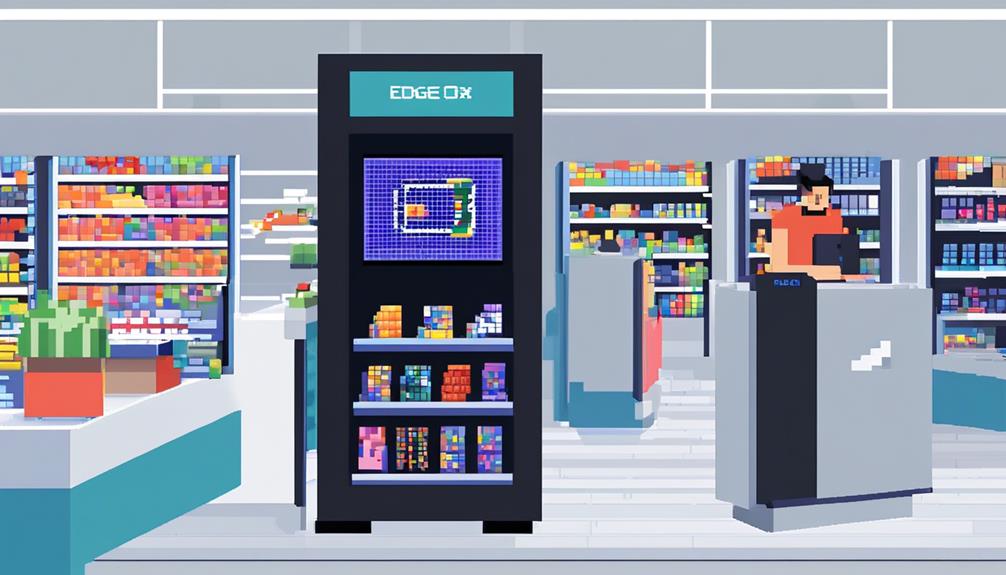
ObjectBox distinguishes itself in the field of edge computing hardware for retail through its unique capability to filter and synchronize only the necessary data on the device, ensuring enhanced security and confidentiality for retailers. Here are three reasons why ObjectBox stands out:
- Enhanced Data Security: ObjectBox allows retailers to protect sensitive customer information by ensuring that only essential data is synchronized into the cloud. By filtering and synchronizing only the necessary data, retailers can reduce security and compliance risks. This feature is particularly crucial in the retail industry, where the protection of customer data is of utmost importance.
- Offline Payment Processing: With ObjectBox, retailers can process payments with or without an internet connection. This capability is especially valuable in remote areas or locations with inconsistent network connections. By enabling offline payment processing, ObjectBox ensures that retailers can continue to serve their customers and complete transactions even in challenging network conditions.
- Improved Inventory Tracking and Management: ObjectBox enables retailers to enhance their inventory tracking and management processes. By leveraging IoT-driven backroom technologies and automated inventory reordering, retailers can optimize their inventory levels. ObjectBox's ability to synchronize data in real-time ensures that retailers have accurate and up-to-date information about their inventory, allowing them to make informed decisions and avoid stockouts or overstock situations.
Case Study: Edge Computing in PoS
Implementing edge computing in Point of Sale (PoS) systems revolutionizes retail operations by enhancing payment processing capabilities and enabling real-time data analysis for improved customer experiences and inventory management. Edge computing brings the power of processing and analyzing data closer to the source, reducing latency and improving overall system performance. In this case study, we will explore how edge computing transforms PoS systems in retail.
One of the key benefits of edge computing in PoS systems is the ability to process payments even without an internet connection. This is particularly useful for retailers in remote areas or with inconsistent network connections. By leveraging edge computing, retailers can ensure uninterrupted payment processing, leading to enhanced customer satisfaction.
Furthermore, edge computing enables real-time data analysis, allowing retailers to gain valuable insights into customer behavior and preferences. Through interactive screens and digital mirrors, retailers can provide personalized experiences to customers, offering product recommendations and customized purchase suggestions. Additionally, edge computing enables the seamless integration of proximity marketing strategies, utilizing customer data to deliver targeted offers and promotions.
To illustrate the impact of edge computing in PoS systems, let's examine the following table:
| Use Case | Benefits | Implementation |
|---|---|---|
| Scanning QR codes | Enhanced customer experience through quick and easy payments | Edge devices |
| Real-time inventory | Improved inventory management and reduced stockouts | IoT sensors |
| Interactive displays | Engaging and personalized shopping experiences | Smart devices |
Revolutionizing Retail With Edge Computing
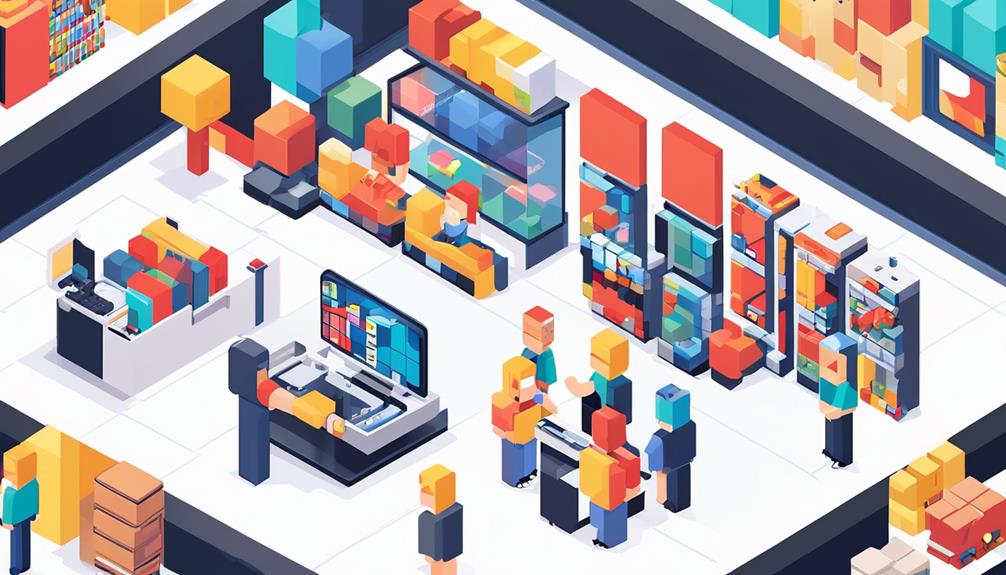
Edge computing has the potential to revolutionize the retail industry by enabling enhanced real-time analytics and improving the in-store experience. With edge computing, retailers can process and analyze data closer to the source, allowing for quicker insights and decision-making.
Additionally, edge computing can enable the deployment of smart devices that engage in proximity marketing, creating personalized experiences for customers based on their data. By harnessing the power of edge computing, retailers can unlock new possibilities and gain a competitive edge in the market.
Enhanced Real-Time Analytics
Enhanced real-time analytics in the retail industry is being revolutionized through the implementation of edge computing, enabling faster customer experiences, optimized inventory management, and improved personalization and targeting. By leveraging edge computing hardware, retailers can benefit from the following:
- Reduced latency: Edge computing enables real-time data processing and analysis, allowing retailers to provide customers with faster and more responsive experiences.
- Enhanced inventory management: With edge technology, retailers gain real-time insights into inventory levels, enabling them to minimize stockouts and optimize their supply chain.
- Improved personalization and targeting: Edge computing facilitates the collection and analysis of customer data in real-time, enabling retailers to deliver personalized offers and recommendations, ultimately enhancing the overall customer experience.
Improved In-Store Experience
The integration of edge computing technology has revolutionized the in-store experience for retailers, enhancing customer engagement and enabling innovative features such as proximity marketing and real-time feedback. With the use of edge computing, retail stores can now provide a more personalized and interactive shopping experience for their customers. Interactive screens and smart devices powered by edge computing technologies allow shoppers to access product information, reviews, and recommendations right at their fingertips. Additionally, edge computing enables synchronized shopping experiences across various channels, ensuring a seamless transition between online and offline shopping. This not only improves customer satisfaction but also increases sales and brand loyalty. The table below highlights some of the key ways in which edge computing enhances the in-store experience for both customers and retailers:
| Improved In-Store Experience |
|---|
| Proximity marketing |
| Real-time feedback |
| Personalized recommendations |
| Interactive screens |
| Synchronized shopping |
The Future of Retail With Edge Computing
With the integration of edge computing in the retail industry, a transformative future awaits where real-time data processing and enhanced customer experiences become the norm. Edge computing brings a multitude of advantages for retailers, paving the way for a new era of retail.
Here are three key aspects that highlight the future of retail with edge computing:
- Interactive screens: Edge computing enables the deployment of interactive screens throughout retail spaces, revolutionizing the way customers engage with products and services. These screens can provide personalized recommendations, virtual try-on experiences, and real-time inventory information. By leveraging edge computing, retailers can create immersive and interactive environments that captivate customers and drive sales.
- New retail experiences: Edge computing empowers retailers to create innovative and personalized shopping experiences. With real-time data processing at the edge, retailers can offer customized promotions, targeted advertisements, and seamless integration between online and offline channels. This not only enhances customer satisfaction but also increases brand loyalty and revenue.
- Dematerialized shopping: Edge computing plays a critical role in dematerializing the shopping experience. By enabling secure data transfer and processing at the edge, retailers can reduce reliance on physical infrastructure and streamline operations. This includes implementing contactless payment systems, mobile checkouts, and automated inventory management. Dematerialized shopping not only improves efficiency but also aligns with the growing demand for frictionless and convenient shopping experiences.
Frequently Asked Questions
What Is Edge Retail?
Edge retail refers to the implementation of edge computing technologies in the retail industry. It brings real-time data processing and analysis closer to the source, enabling offline payment processing, proximity marketing, customized purchase suggestions, and improved inventory tracking.
The benefits of edge retail include reduced latency, enhanced security, and optimized data transfer to central servers. However, challenges such as network connectivity and scalability need to be addressed.
The future of edge retail holds great potential for innovative use cases and improved operational efficiency in the retail sector.
What Is the Edge Technology Solution in Retail?
Edge technology implementation in the retail industry offers numerous benefits. These include enhanced security and compliance, offline processing capabilities, improved in-store experiences, and automated inventory tracking.
However, there are challenges associated with implementing edge technology. These challenges include ensuring seamless data transfer and managing the complexity of interconnected devices.
There are various use cases of edge computing in retail. These use cases include smart shelves, in-store intelligence, and IoT-driven backroom technologies.
These solutions bring efficiency and improved customer experience. This makes edge computing a valuable tool for retailers.
How Is Edge Computing Used in Retail?
Edge computing offers several benefits in the retail industry. It enables real-time data processing, reducing latency and improving customer experiences.
Examples of edge computing applications include offline payment processing, smart devices for personalized marketing, and automated inventory management.
However, implementing edge computing in retail faces challenges such as infrastructure requirements and data security.
Future advancements in edge computing for retail include enhanced machine learning capabilities and increased connectivity with IoT devices.
What Hardware Is Used in Edge Computing?
Edge computing hardware refers to the hardware components that form the foundation of edge computing architecture. It includes edge servers, which are responsible for processing and analyzing data at the edge of the network, and edge devices, which collect and transmit data from the physical environment. These hardware components enable the decentralized processing and storage of data, reducing latency and improving efficiency.
Edge computing architecture leverages these hardware components to enable real-time data processing and analysis, enhancing various industries, including retail, by enabling offline payment processing, personalized marketing, and automated inventory management.
